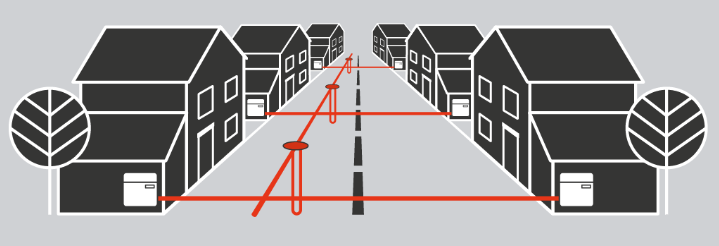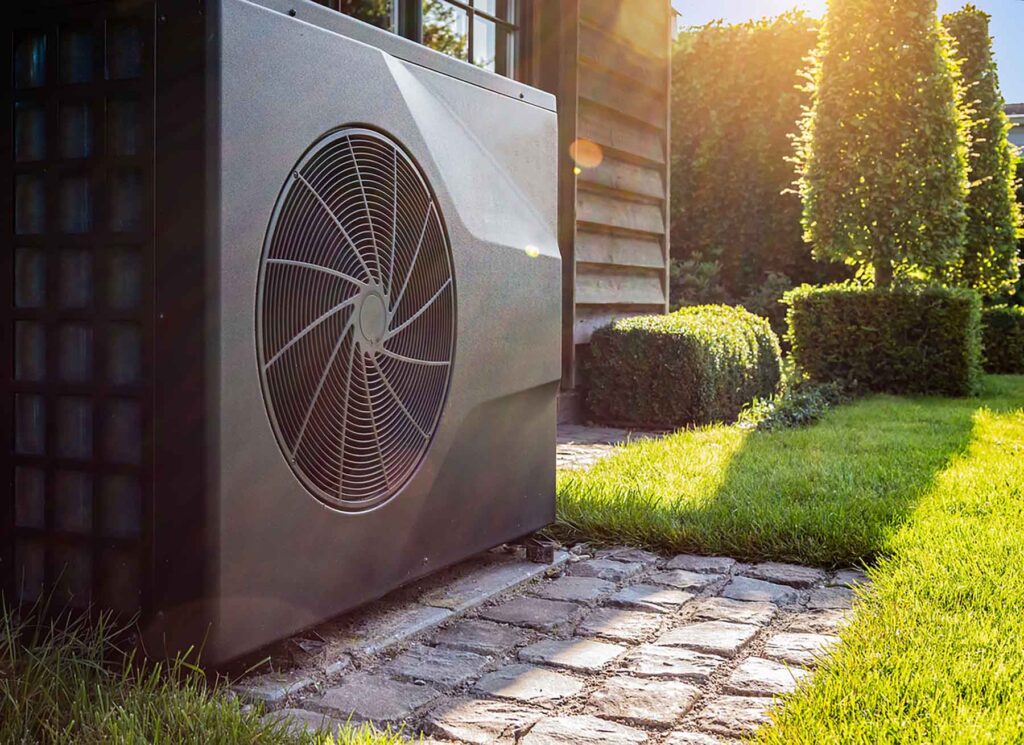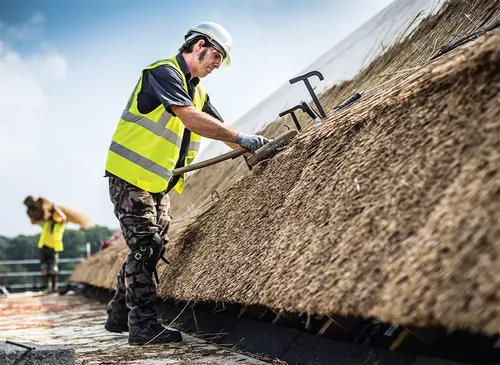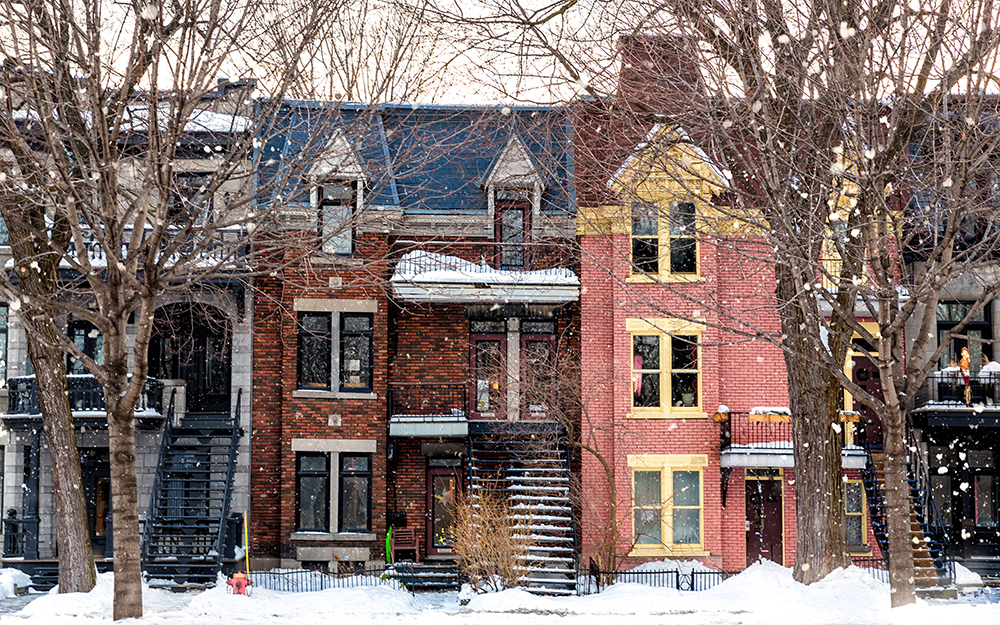Find more about sustainable building and land use – here
To fight climate change, get a white roof
Eric Scigliano sings the praises of light-coloured roofs for the climate, for personal comfort and for the pocketbook, while also pointing out that he’s fighting an uphill battle. This article published in The Atlantic in 2022 requires a subscription, but here’s an excerpt:
“But as I scanned my neighbors’ uniformly dark roofs, I realized that mine stood out like white sneakers at a black-tie ball. The professionals confirmed my impression. “Twenty years ago, when I got into this business, a lot more colors were used,” [Roofing salesperson Chris] Hagen told me. “Tans, brown, green. In the last seven or eight years, it’s been black and gray—really dark colors.” Moiré Black, Georgetown Gray, and Weathered Wood, to be precise.
All this despite the fact that light shingles tend to last longer than dark ones; they stretch, contract, and crack less in the heat. Factor in energy costs and they’re a bargain: A study by Lawrence Berkeley National Laboratory found that white roofs cost considerably less over their lifetime than both black and sustainability-flaunting grassy “green roofs,” which have other environmental benefits but cost more to install and, contrary to popular belief, don’t do much to counter global warming. Researchers at Australia’s University of New South Wales, another hotbed of cool-roof research, determined that such roofs reduced indoor temperatures by up to 7 degrees Fahrenheit.” Read the full Atlantic article (with subscription)
Other Cool Roof Resources
- Cool Roofs: Heat Island Group, Berkeley Lab
- Study on the Cool Roofs Mitigation Potential in Australia: University of New South Wales

The heat beneath our feet

Feb 18, 2024 – Chris Hatch – Zero Carbon
… But very smart people are rolling them out under whole neighbourhoods in a version of district heating known as a geothermal network, where a few boreholes supply a community, distributing the system cost while providing heating and air conditioning to multiple buildings. In New England, studies show networked geothermal to be cheaper than gas or air-source heat pumps and scalable across the region. – More
“Heat pumps are the most efficient heating technology ever invented”

July 18, 2023 – Reneweconomy.com.au – Dr Jan Rosenow, discusses why overall energy demand will reduce by 40% if we electrify everything, and why energy efficiency is a key part of the electrification journey.
The International Energy Agency is predicting a global explosion in the uptake of heat pumps. Their modelling, and that of other organisations, has identified heat pumps as the critical technology we need to get to net zero by 2050.
… heat pumps “are the most efficient heating technology that we have ever invented.”
Read the article – Listen to the podcast
Concrete Built The Modern World. Now It’s Destroying It.
Dec 6, 2022 – NOEMA Magazine

A growing chorus of architects argue we have to build differently with concrete — which contributes to global warming and environmental destruction on a scale that’s hard to fathom — or perhaps abandon it altogether.
…It was the beginning of an era of rampant construction in Switzerland. In the 1950s and 60s, the Swiss poured more concrete per capita than any other country; before the century was out they would expand beyond their borders and become globally recognized concrete connoisseurs, building dams in Morocco and Kenya, housing projects in Iran and airports in Saudi Arabia, each with their own cement factories to provide material. But the Swiss were not alone: Across the Global North, concrete mania had taken hold.
The ‘Ironclad Rule of Carbon’ Means We Have to Change How We Think About Design

Sept 22, 2022 – Lloyd Alter – Tree Hugger
“As we electrify everything and decarbonize the electricity supply, emissions from embodied carbon will increasingly dominate and approach 100% of emissions”
… In the 1990’s, “Scientific life-cycle energy analyses repeatedly found that the energy used in the operation and maintenance of buildings dwarf the so-called ’embodied’ energy of the materials”.
…But a funny thing happened when buildings got more efficient because of tighter building codes and the growth of building certification systems such as LEED: the cumulative operating energy took much longer to overtake the embodied energy. It was such an obscure issue in 2009 that it had to be explained…
As Lloyd explains in this rant (article), this thinking has to be applied to everything we consume. There are a lot of great links in this article – Read it here.
The buried pipes that will help U of T turn carbon positive

April 19, 2022 – National Observer – Morgan Sharp
The usually bustling downtown campus of the University of Toronto lay empty of students and faculty during long pandemic-enforced absences, and the construction crews working on a major environmental project took advantage.
Initially envisioned as an effort to remove cars from King’s College Circle, the landscaping project morphed into something more ambitious — a geothermal exchange system that in conjunction with major building retrofits and other measures will help the St. George campus become carbon positive by 2050, meaning it will collect more carbon than it emits.
… More than 300 geoexchange wells have been drilled under the expansive green space at the front of the campus, each over 250 metres deep. These will allow heat produced in the summer to be stored underground and drawn on in the winter, with the process reversed to use winter’s chill to cool summer days.
Find more at The National Observer
How To Heat Your Home Without Heating The Planet

Brett Tryon – Updated November 2, 2021 – Chatelaine
You don’t need to burn fossil fuels to heat your home.
Heating your home with fossil fuels doesn’t just keep you warm—it creates emissions that warm the planet. Home heating is Canada’s largest source of residential greenhouse gas emissions. The good news: there’s a more environmentally conscious option that can help you save energy, shrink your carbon footprint, and build Canada’s resilience to a changing climate and fluctuating fuel prices. Here’s what you need to know about switching from a gas furnace to a heat pump—and why you should consider it.
Architects Climate Action Network Calls for Regulation of Embodied Carbon
The majority of a building’s carbon emissions happen before it’s even opened.
:max_bytes(150000):strip_icc():format(webp)/frontispiece-07f3fe6451174cf3a8eadd3f85a8a803.jpg)
By Lloyd Alter, Updated February 05, 2021
The clever frontispiece (shown to the left) of the report “The Climate Footprint of Construction” says it all: above the line is the finished building, while below the line are the power plants, freighters, transport trucks, cranes, factories, and mines that make all the stuff that goes into a building. All of those industries and processes emit carbon dioxide and equivalent gases, and added together are known as embodied carbon. It’s unseen and has been mostly ignored, but according to the report’s authors, the Architects Climate Action Network (ACAN), can total more than 75% of a building’s lifetime carbon emissions.
Builders for Climate Action
What is up-front embodied carbon and what impact does it have on climate change? What’s the carbon footprint of the materials for your next building project?
Low Rise Buildings as a Climate Change Solution – View the white paper as a slideshow, download the pdf – here
How to Build Affordable Social Housing to Passive House Standard
:max_bytes(150000):strip_icc():format(webp)/Mcquestinexterior-8c6cac9628eb42d18fed9207da751af9.jpg)
By Lloyd Alter Published January 11, 2021
Designing to the Passive House standard of energy efficiency and airtightness is hard. Designing social housing on a tight budget to the Passive House standard is incredibly hard. That’s why the work of Emma Cubitt and Invizij Architects is so interesting and important.
The 10 design commandments for cutting your building’s embodied carbon

“When I first came here, this was all swamp. Everyone said I was daft to build a castle on a swamp, but I built it all the same, just to show them. It sank into the swamp. So, I built a second one. And that one sank into the swamp. So, I built a third. That burned down, fell over, and then sank into the swamp. But the fourth one stayed up. And that’s what you’re going to get, son, the strongest castle in all of England.”
King of Swamp Castle, Monthy Python’s Holy Grail
This guide will show architects and other building designers how to effectively reduce the embodied carbon of a construction project. Avoid building castles on a swamp and follow these design commandments to achieve substantial and cost-effective emissions reductions, and learn how to achieve low carbon design in your projects.
Carbon Capture And Storage In Building Materials
MY NAME IS CHRIS MAGWOOD. I’M OBSESSED WITH MAKING BETTER BUILDINGS FOR PEOPLE AND THE PLANET. ZERO NET ENERGY, ZERO CARBON, ZERO TOXIN, ZERO WASTE BUILDINGS.
Buildings can play a key role in reversing climate change. We can do this now.
Build Back Greener: Live with Mike – Sept 24, 2020 – on you tube
Melinda Zytaruk, CAM member and community power expert, chats with Mike Schreiner about how we can Build Back Greener and create new opportunities for women in trades.
Athena Sustainable Materials Institute,
The Athena Sustainable Materials Institute is a membership-based non-profit research collaborative bringing life cycle assessment (LCA) to the construction sector.
Douro-Dummer The Sustainable Development Program
Reducing emissions of one house is equivalent to taking up to 13.5 cars off the road each year.
40% Permit fee reduction for new houses that meet a low carbon footprint
80% Permit fee reduction for new houses that meet a low carbon footprint and
near net zero energy consumption
British Architects Declare Climate and Biodiversity Emergency
For everyone working in the construction industry, meeting the needs of our society without breaching the earth’s ecological boundaries will demand a paradigm shift in our behaviour. Together with our clients, we will need to commission and design buildings, cities and infrastructures as indivisible components of a larger, constantly regenerating and self-sustaining system.
